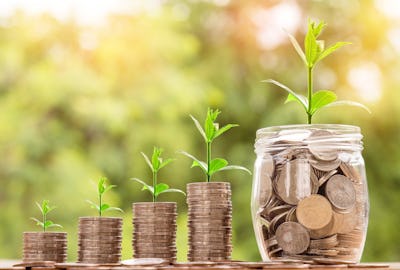Energy Efficient Home Improvements
Energy efficient homes are becoming more and more known across the world as people realize they can save money while helping the environment. Energy efficiency is not just a social trend you see in areas or a way to show affluence, it is a way to reduce your carbon footprint all while saving you money in the long run. Some larger investments towards energy efficiency may be costly especially up front when it comes to using capital, but in the long run you manage to make your money back until you break even, which is when you start saving compared to if you hadn’t made the necessary changes.
Whether you are looking to purchase a new construction home equipped with an energy star rating or you are looking to update your existing home, “going green” is a great new way to increase your energy savings. From changing out your windows, to installing a programmable thermostat, to switching out appliances, updating and improving your home's energy efficiency is a win-win, helping save the environment, and saving you money.
So, what are energy efficient home improvements? How do I earn an Energy Star rating? How do I improve my home to be more green? Can I write off my upgrades? Is there a tax credit? Today, there are many ways to save money such as an increase in your home's insulation, replacing heating, cooling, and water systems, and/or using energy efficient lighting. As a result, you save money on utility bills as you use less electricity and the living environment around you is healthier as it prevents pollutants. Here are 8 of the best money saving energy efficiency upgrades you can make:
The Best Money-Saving Energy Efficient Home Improvement Features
- Replace Old Appliances With Energy Star Certified Appliances
These are rated Energy Star washers, dryers, microwaves, etc. which can reduce energy use by up to half compared to older models. Homes over 15 years old may benefit from a new boiler, air conditioner, or furnace. According to today’s standards, heating systems that are about 15+ years old and air conditioners 10+ years old are inefficient and burn much more energy than they should be. By installing new equipment, it will cost some capital up front, but over time you will see your energy costs going down, especially when combined with other improvements such as sealing windows and doors, or adding the amount of insulation in your home.
- Add Extra Layers of Insulation
Many old homes could greatly benefit from adding an extra layer of insulation, especially above the top rooms of a home, as heat tends to rise, which is where a home will most likely find heat loss. Adding more insulation to your home likely leads to savings, which you could see return in about 4 to 5 years. The added insulation will also make your home quieter and make it feel more comfortable, all while reducing heating and cooling energy costs.
- Re-Seal Windows and Doors or Install New Ones
When was the last time you had your home sealed? If you have an older home the answer is likely very minimal. By weather stripping or caulking your homes doors and windows, you are tightening the seal to the outside, reducing heating and cooling costs as hot or cool air will stay inside. By reducing drafts into your home, you save money on your utility bill, lowering energy costs, and keeps must, mold and allergens out. You can also look to replace your windows. Double pane, low emissivity windows can help reduce drafts, outside noise, and heating and cooling costs.
- Install a Programmable Thermostat
A smart thermostat that you can set on specific timers and even control from your phone is much more optimized for today’s times. A programmable thermostat can enhance your cooling and heating efficiency by setting a climate control system. Doing so can give homeowners an optimal temperature at a minimal cost. Overnight you may want your home cooler as you sleep, but want it warm when it's time to wake up. Once you program your thermostat to do so, it automatically alters your home's temperature to keep heating and cooling costs down.
- Energy Efficient Lighting
This is simple enough that you could accomplish this today! Replacing incandescent bulbs with energy efficient CFLs and LED lighting can reduce energy use in homes by 50-75%. Energy Star certified LED bulbs last up to 15 times longer and use up to 90% less energy than a standard bulb. Reducing your lighting costs is a no brainer! Just one single Energy Star bulb can save you more than $55 in electricity costs over the course of its lifetime. Get shopping, because it’s time to save some money!
- Enhance Air Conditioning with Ceiling Fans
Ceiling fans are a very underrated tool within a home. Ceiling fans not only send a pleasant, gentle breeze to those below it, but more importantly they assist in circulating the air in your home. Fans are very cheap to power, especially compared to the cost of running air conditioning. But, even in the winter they help to keep the heat from rising to the ceiling, keeping the warmth inside your home.
- Install Solar Electric Panels or Solar Roof Shingles
Convert sunlight into electricity, which reduces your home's dependence on fossil fuel. Solar can almost immediately lower your energy costs and protect you from rising electricity rates, especially in the winter where rates tend to spike due to colder weather. Solar is still pretty costly when it comes to installing them, but over time they make their money back as they save homeowners thousands every year in electric bills. Installing panels can save an average of $1,408 in-home energy bills every year. Over a lifetime, homeowners can save between $10,000 and $30,000. Today they even have solar roof shingles, which are cheaper than installing new shingles and solar panels. Solar panels even offer many incentives like a nonrefundable tax credit that can reduce or eliminate how much you owe on your taxes.
- Replace Heating Cooling and Water Systems
A tankless water heater or high efficiency water heater can reduce your monthly water heating bills. This is a much larger home upgrade that pays itself off over time. Using an electric heater versus a fossil fuel option is much safer for the environment and much kinder on your bank account. “A standard water heater is about 60% efficient. Some of the better models of heat pump water heaters (HPWH) already exceed the new appliance standard – reaching between 200% and 350% efficiency.” Bruce Sullivan | Zero Energy Project.
As we now know, there are many ways to save money and to convert your home to be energy efficient. Converting your home to Energy Efficient standards not only saves you money, but it also helps the environment by reducing your carbon footprint. Making these upgrades allows you to sit in your home comfortably knowing you’ve done your part to ensure a healthy environment for future generations to come. These are the best home energy efficient improvements you can make.





